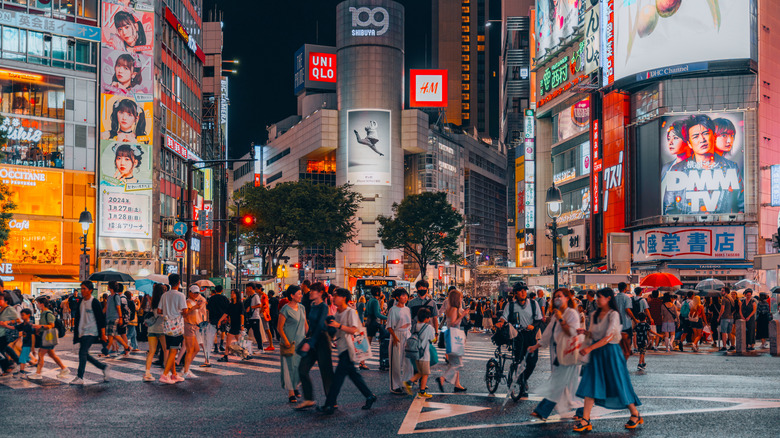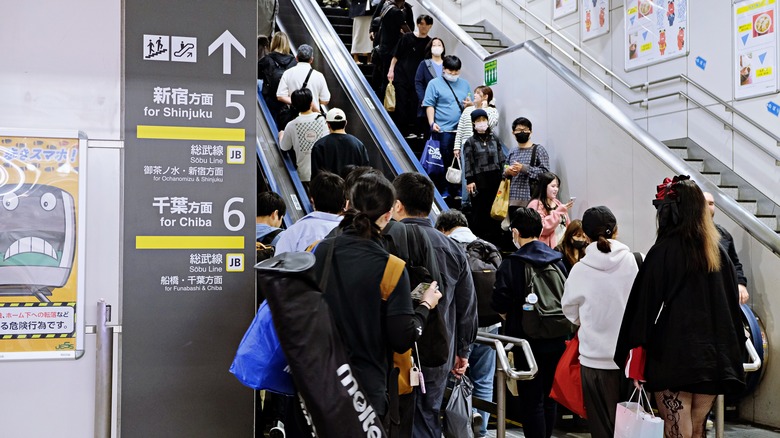Tokyo Locals Get Frustrated With Tourists Who Ignore This Social Etiquette Rule
From unexpected dining etiquette in Norway to etiquette rules you need to follow in the American South, a big part of travel is being mindful of other cultures and customs. And if there's one unspoken rule that tourists often overlook in Tokyo, it's situational awareness. That means not forgetting you aren't the only one trying to go places and do things. For example, standing in the middle of a walkway, blocking others, or taking up a restaurant seat after you've already finished eating are big cultural blunders.
From trains to escalators to temple walkways, Japanese society flows on an invisible current of mutual respect, quiet observation, and anticipation of others' needs. The last thing you want to do as a guest in another country is offend the locals — or reinforce negative stereotypes. Another example of a common misstep is standing on the wrong side of the escalator. While visitors from North America are used to the "stand right, walk left" rule, it's the opposite in Tokyo. This may seem like a minor detail, but blocking the walking lane during a busy morning commute is a quick way to stand out for the wrong reasons.
But that's just the beginning. Tourists who show up late for appointments or leave their shoes on when entering a home, business, or temple may not realize they're breaking social rules — but to Tokyoites, it's a noticeable breach of harmony. Learning to read the room — or, as the Japanese say, "kuuki wo yomu" ("read the air") — goes a long way. And in Tokyo, reading the air means picking up on social cues that tell you how to be considerate of others.
More etiquette tips for blending in with Tokyo locals
In Tokyo, etiquette and manners are a huge part of daily life, and knowing the basics can make your trip smoother and prevent embarrassing interactions. Eating while walking, for example, is generally frowned upon. Though the city offers irresistible street food, most locals pause to enjoy it standing near the stall or seated on a bench. Walking and eating is often seen as messy or inconsiderate, especially on crowded sidewalks. And definitely don't eat on the train (outside of bullet trains, where stations sell bento boxes for your journey across Japan).
And then there's personal space. One unspoken train etiquette rule in Japan, also related to situational awareness, includes wearing your backpack on the front to make space on the train. While the trains may get packed, you'll notice how people generally avoid touching others whenever possible. Tourists who spread out their luggage in walkways, gesture broadly, sit with wide-open legs, or block exits can be annoying.
That goes for being noisy on the train, too — Tokyo residents prefer if you make little to no noise so as to not disturb other passengers. That means wearing headphones while listening to music and saving phone calls for after you get off. The best way to politely get around Tokyo is to take note of what others do, follow their lead, and move with intention. All you really need to do is pay attention — but reading up on cultural etiquette before you travel is always a good practice, no matter where you're headed.

